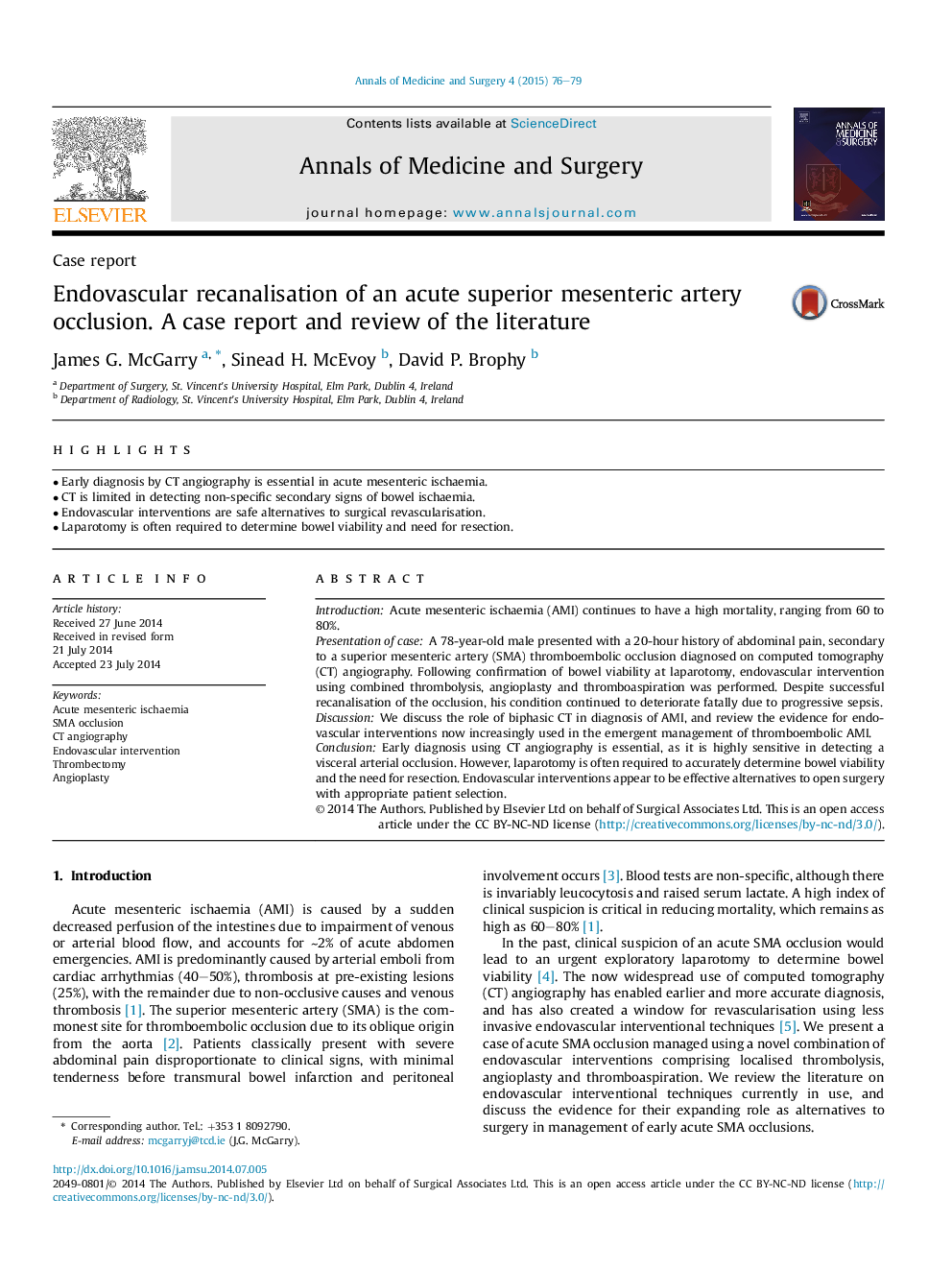| Article ID | Journal | Published Year | Pages | File Type |
|---|---|---|---|---|
| 4195444 | Annals of Medicine and Surgery | 2015 | 4 Pages |
•Early diagnosis by CT angiography is essential in acute mesenteric ischaemia.•CT is limited in detecting non-specific secondary signs of bowel ischaemia.•Endovascular interventions are safe alternatives to surgical revascularisation.•Laparotomy is often required to determine bowel viability and need for resection.
IntroductionAcute mesenteric ischaemia (AMI) continues to have a high mortality, ranging from 60 to 80%.Presentation of caseA 78-year-old male presented with a 20-hour history of abdominal pain, secondary to a superior mesenteric artery (SMA) thromboembolic occlusion diagnosed on computed tomography (CT) angiography. Following confirmation of bowel viability at laparotomy, endovascular intervention using combined thrombolysis, angioplasty and thromboaspiration was performed. Despite successful recanalisation of the occlusion, his condition continued to deteriorate fatally due to progressive sepsis.DiscussionWe discuss the role of biphasic CT in diagnosis of AMI, and review the evidence for endovascular interventions now increasingly used in the emergent management of thromboembolic AMI.ConclusionEarly diagnosis using CT angiography is essential, as it is highly sensitive in detecting a visceral arterial occlusion. However, laparotomy is often required to accurately determine bowel viability and the need for resection. Endovascular interventions appear to be effective alternatives to open surgery with appropriate patient selection.
